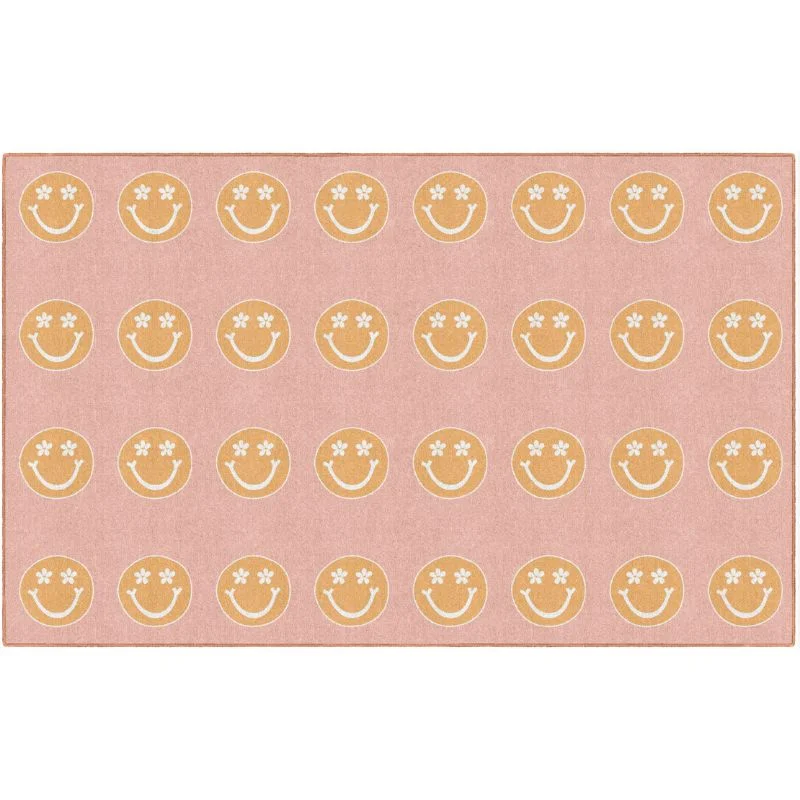The Good Vibes Happy Faces Rug is the perfect addition to any learning space. Your seating area will be brightened up by the playful design of smiling faces, making it not only appealing but encouraging positive energy among children.
Please Measure Your Space and Choose the Best Size
Light colors will show dirt from everyday foot traffic 👟
Sizes:
- 5' x 7'6 (28 happy faces)
- 7'6 x 12' (32 happy faces)
Infused with hues of sunbeams, warmth, and cool, the Good Vibes Happy Faces Rug has groovy smiles that create peaceful vibes and a calm ambiance. 🌞
- Made in the U.S.A. with an infusion dye process, ensures bright lasting color.
- Anti-Microbial and Anti-Static Treatment for a clean and safe environment. Treated with Scotchgard protector for superior soil resistance. 🛡️
- 24 oz Nylon w/Urethane Backing System for durability.
- Class I Flammability Rating, and Indoor Air Quality passed. Bound and double-stitched with nylon edge yarn for maximum strength and durability. 🔥
SensoryEdge is an Authorized Seller of SchoolGirl Style Designs
The smiley face has a fascinating history that spans many years and involves different creative and cultural influences. This simple and universally recognized symbol stands for happiness, positivity, and friendliness. Harvey's design had a bright yellow circle with two black dots for eyes and a gentle curve for the mouth, forming a happy face. People loved it, and this was one of the first versions of the modern smiley face. 1970s - In the 1970s, the 😊 smiley face became even more popular. It became a symbol for a new way of thinking and expressing happiness. You could see it on posters, stickers, and clothes. People liked using it to show they were feeling happy, peaceful, and carefree. It also started appearing on lots of things you could buy. 1980s - Influence Continues: The 😁 smiley face's popularity continued into the 1980s. It became connected to a type of music and fashion called "New Wave." You could see it in music videos, album covers, and clothes from that time. 1990s - The Digital Age: When the internet became big in the 1990s, the 🙂 smiley face found a new way to be used. People made "emoticons," which were simple pictures made using keyboard characters. For example, when you type ":)" it looks like a smiley face turned sideways. This helped show feelings in online chats and emails. 2000s to Today - Emojis Emojis Emojis Everywhere: In the 2000s, something really cool happened. Emojis were born! Emojis are small pictures used to show feelings and ideas in digital messages. The 😍 smiley face emoji, like 😊 or 😀, became super popular and is used by people all around the world. The 😊 smiley face has evolved from a simple graphic design created for a corporate campaign to a global symbol of positivity and happiness. Its journey through various decades, cultural movements, and technological advancements reflects its enduring appeal and relevance in human expression. 🌟The History of the Smiley Face
1960s - The iconic smiley face we know today was created in the early 1960s. A talented graphic designer named Harvey Ross Ball came up with this design. He was asked by a company to create something that would make their employees feel better.

